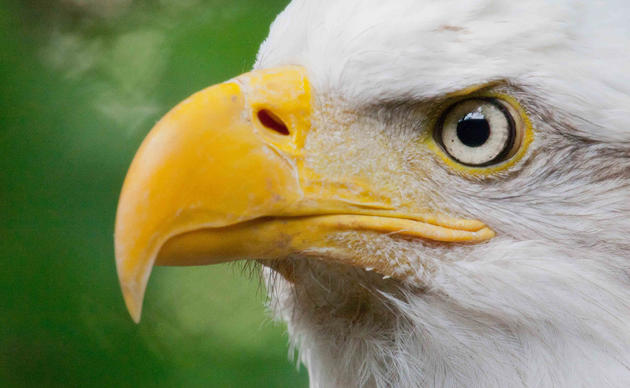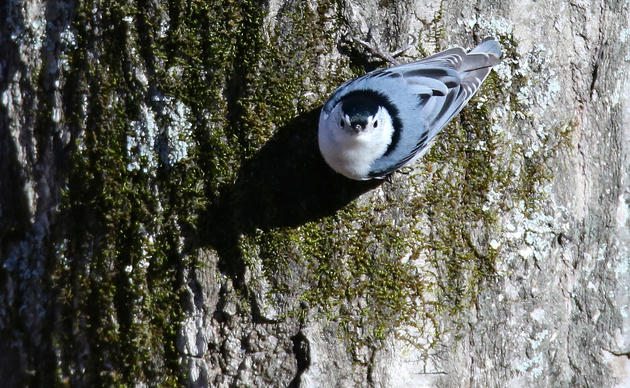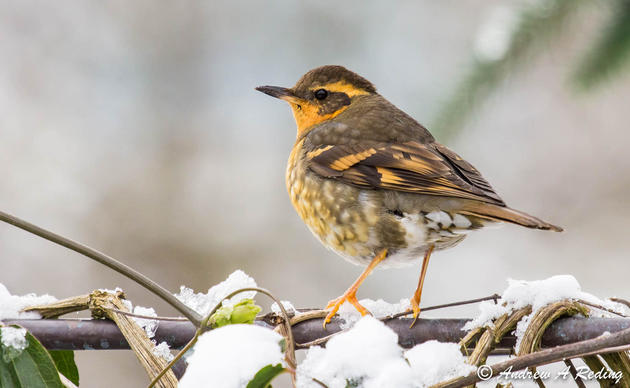Renewable Energy: Siting it Right in the Columbia Plateau and Beyond
The climate threat facing birds is urgent. To achieve a future where both people and wildlife thrive, Audubon is advocating for the rapid and responsible build out of the renewable energy and transmission needed to reach our state’s 100% clean electricity mandate. By advocating for responsible and community-centered planning, we can protect birds from the worst impacts of climate change while preserving the places we all need.
In 2019 Audubon Washington helped pass the Clean Energy Transformation Act (CETA), committing Washington to an electricity supply free of greenhouse gas emissions by 2045. This same year, we concluded our six-year Sagebrush Songbird Survey, an unprecedented community science partnership to create sagebrush songbird distribution models in Washington's imperiled shrub-steppe ecosystem. What’s the connection? Much of the land we surveyed is prime real estate for renewable energy infrastructure projects needed to meet the state’s clean energy goals.
Given the convergence of these two priorities, Audubon Washington is actively engaged in the development of tools and resources that developers and other stakeholders can use to facilitate responsible clean energy siting decisions.
For example, in the 2021 legislative session, we worked with a bipartisan group of legislators to secure $500,000 in state funding for a stakeholder-driven process to guide utility-scale solar photovoltaics (PV) development towards areas with the least amount of conflict related to the environment and agriculture.
In June 2023, we championed the release of the resulting Least-Conflict report, published by the Washington State University Energy Program. This report and associated maps can be used to identify places where utility-scale solar projects can be developed in ways that minimize impacts to important natural habitat, productive farmlands, and ranchlands.
We continue to partner with key stakeholders to advocate for improved clean energy siting and permitting in Washington, seeking to flip the model from one that is developer-led, to one that prioritizes biodiversity along with cultural values. Our network of chapters and our conservation partners continue to engage in clean energy siting decisions in what has become a clean energy boom in the Columbia Plateau. Together, we can ensure the avoidance, minimization, and, where necessary, mitigation of impacts to birds and habitat.
Audubon Washington's Clean Energy Screening Tool
Climate change is the number one threat to birds, and Audubon Washington strongly supports the development of renewable energy – including solar, wind, and geothermal power – as long as it is sited in ways that avoid, minimize, and mitigate negative impacts on birds and other wildlife.
To help determine if a project is sited in a way that avoids and minimizes impacts on birds, we developed a Clean Energy Screening Tool (CEST) to assess the potential impacts of proposed projects on birds and habitat. This tool uses the latest information on bird and ecosystem values, including the sagebrush songbird models generated by Audubon’s six-year Sagebrush Songbird Survey.
Together with our local Audubon chapters, we are dedicated to advocating for environmental protection and climate action.
How you can help, right now
Be the Voice for Birds
Decision makers need to hear from you. Sign up for Audubon Washington's Action Alerts and you will have an opportunity to weigh in on proposals that impact birds.
Get Involved
Birds need YOU! Get involved in helping to preserve our birds and their habitats today. There is something for everyone!
Take Action on Climate Change
Does your decision maker know that climate change is number one threat to birds? Ask for their help to protect the birds, the places, and the planet we love.



